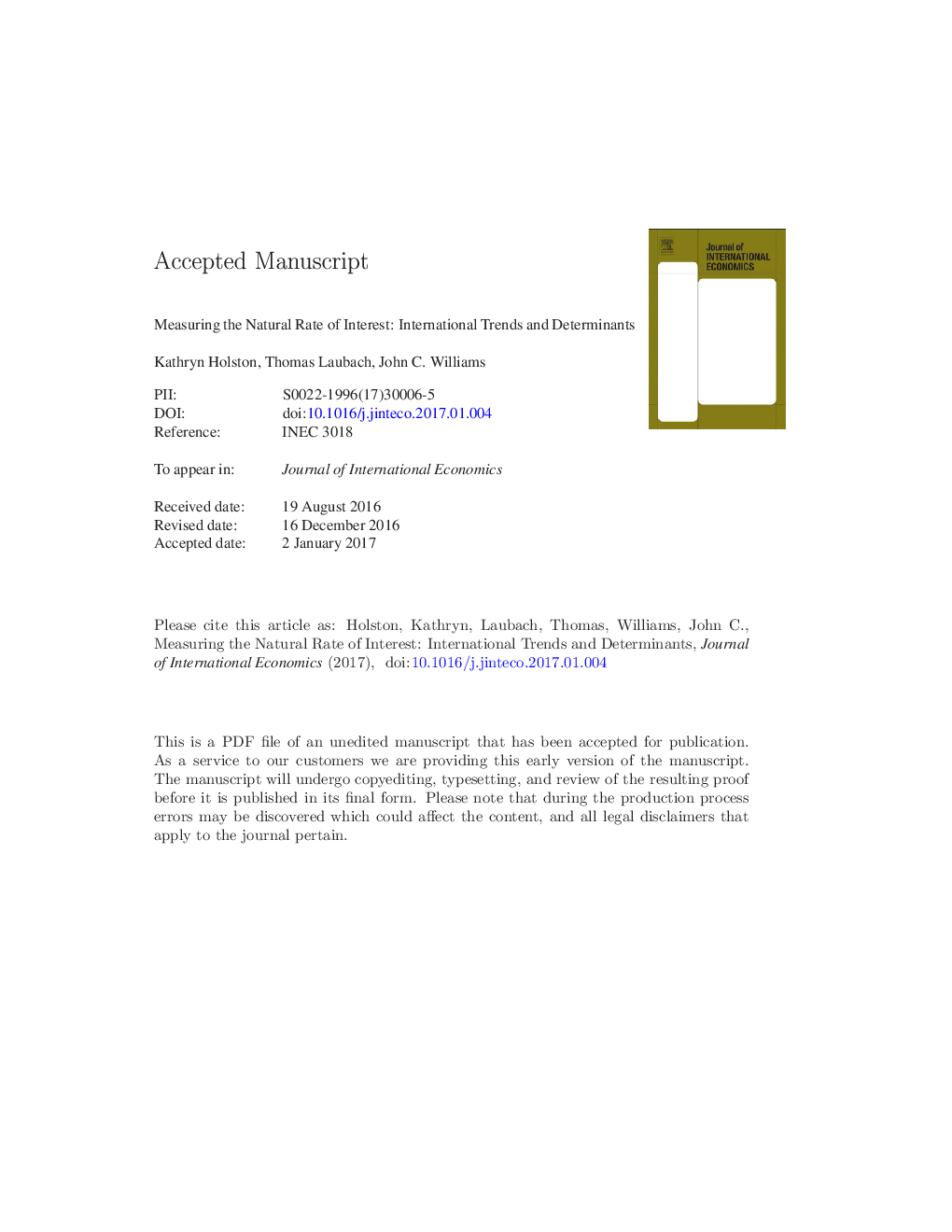| Article ID | Journal | Published Year | Pages | File Type |
|---|---|---|---|---|
| 5100874 | Journal of International Economics | 2017 | 43 Pages |
Abstract
U.S. estimates of the natural rate of interest - the real short-term interest rate that would prevail absent transitory disturbances - have declined dramatically since the start of the global financial crisis. For example, estimates using the Laubach-Williams (2003) model indicate the natural rate in the United States fell to close to zero during the crisis and has remained there into 2016. Explanations for this decline include shifts in demographics, a slowdown in trend productivity growth, and global factors affecting real interest rates. This paper applies the Laubach-Williams methodology to the United States and three other advanced economies - Canada, the Euro Area, and the United Kingdom. We find that large declines in trend GDP growth and natural rates of interest have occurred over the past 25Â years in all four economies. These country-by-country estimates are found to display a substantial amount of comovement over time, suggesting an important role for global factors in shaping trend growth and natural rates of interest.
Related Topics
Social Sciences and Humanities
Economics, Econometrics and Finance
Economics and Econometrics
Authors
Kathryn Holston, Thomas Laubach, John C. Williams,
